Bird watching is a really fun and relaxing activity and it really doesn’t require a lot of gear to get started. In this post, I’m going to outline all the equipment that bird watchers need. You might be surprised just how easy it is to get into bird watching…
As a general rule bird watchers only need either a pair of binoculars, a spotting scope, or a camera with a zoom lens. A bird identification app or field guidebook can also be helpful. Some bird watchers have a life list they carry with them to keep a record of birds they have seen.
The above paragraph describes equipment that a lot of bird watchers use. You don’t however need any of this to start bird watching, all you really need is a place where you can see some birds. Continue reading for more details about how to get started with this incredibly satisfying hobby.
As an Amazon Associate, I earn from qualifying purchases. Birdwatch World earns commissions from Amazon and similar affiliate programs from any purchases made via links in this article.
What Equipment Do Bird Watchers Use?
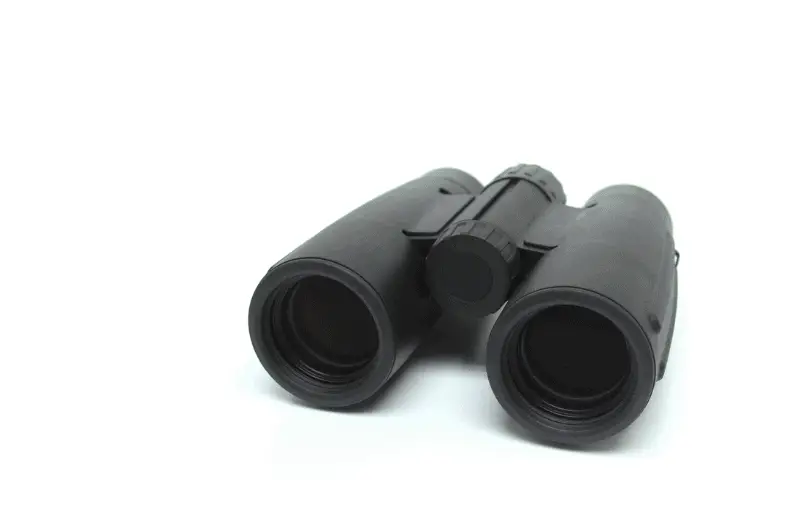
Binoculars
The most popular piece of bird-watching equipment is a pair of binoculars. Most people who enjoy bird watching will use binoculars with an 8×42 magnification. Sometimes they may use 10×42 but 8×42 is the most popular and is the magnification that beginners find most practical. I go into more detail on binoculars in the next sections of this post.
Spotting Scope
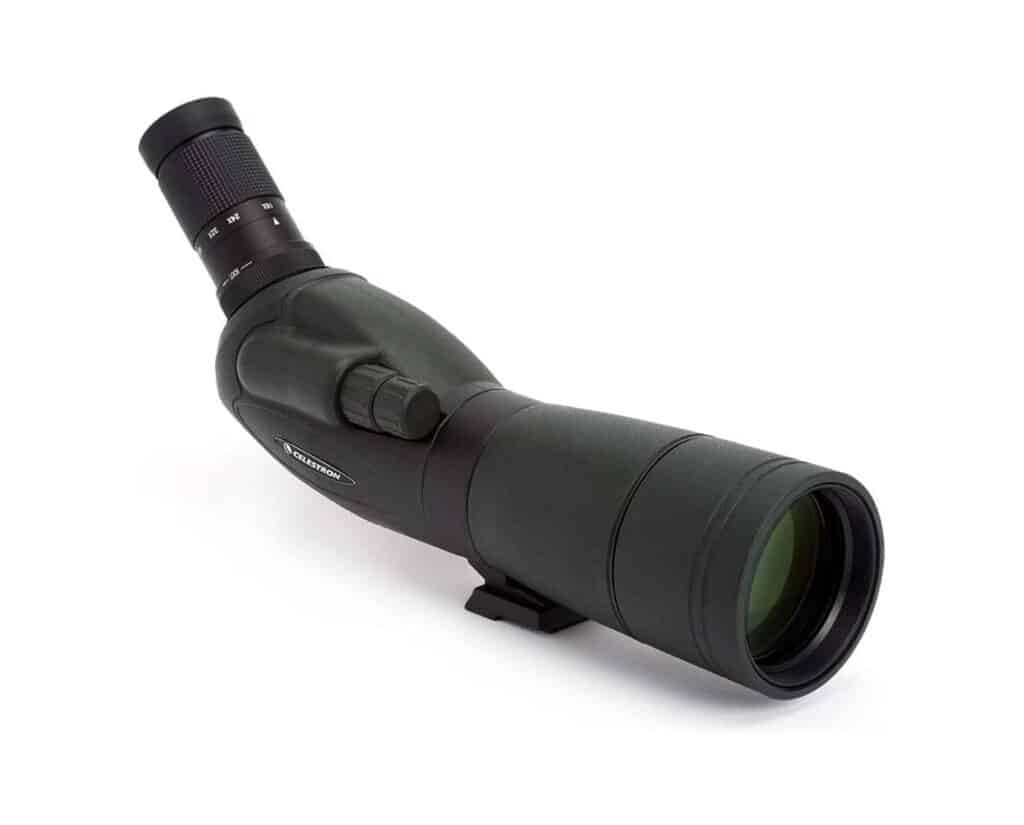
Some people prefer to use a spotting scope. These are basically portable telescopes and provide a bit more zoom than binoculars. You will also need a tripod to mount the scope to so this means you have to carry a little more gear. You can get straight or angled scopes which each has its advantages. We’ll look into scopes in more detail later in this article.
Bird Identification App/Book
A really handy thing to have with you when bird watching is a bird identification app or book. You will very quickly become obsessed with finding out which species of bird you are looking at and learning more about them. There are some great apps and books available to help you do this. We will explore these later on in this post.

Backpack or Vest
You may also find a backpack or birding vest a good idea. It’s possible you will have to walk some long distances to find birds sometimes so you will need to bring food, water and other things with you. A backpack or vest is a great way to carry these items.
Vests are made for functionality, not fashion but if you are brave enough to wear one, go right ahead?! They are a really great way to carry all the bits and pieces you need, they are just not for me.
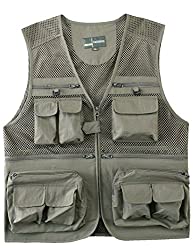
Binoculars For Bird Watching
Binoculars are a bird watcher’s most important piece of equipment. You can watch birds without a pair but if you want to get a closer look at them, binoculars are essential.
As I mentioned earlier in this post the best magnification for bird watching is 8×42. The first number is the magnification so a pair of 8×42 binoculars will make everything appear 8 times larger or closer than it actually is. This is a suitable magnification value for bird watching – not too much and not too little.
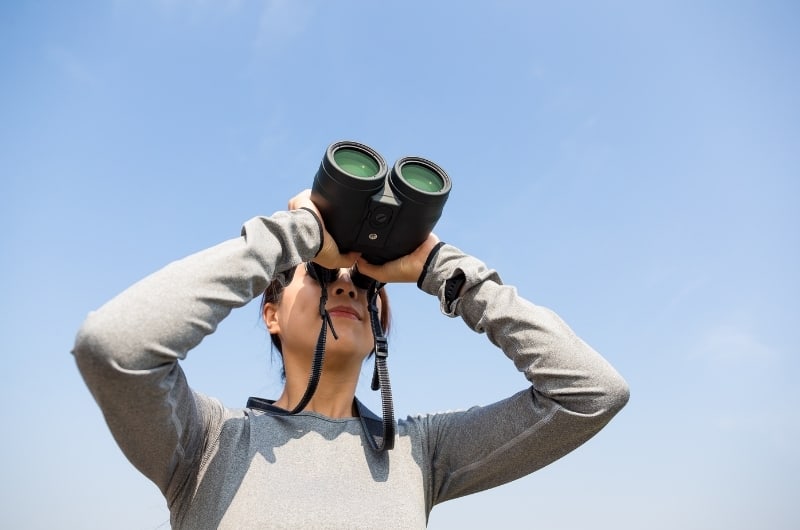
The second number is the diameter of the objective lenses or the lenses at the front of the binoculars. In this case, it means the lenses are 42mm in diameter. This is important because the bigger the objective lenses are, the more light they will let in. You don’t want them too big however as this makes the binoculars bigger and heavier.
You can find a list of quality binoculars in the 8×42 range in this blog post.
Spotting Scopes
A spotting scope is another way to see the birds up close. They provide more magnification than binoculars but require you to have a tripod so you have to carry more gear.
Scopes come in two types: straight or angled.
From the images above you can see that a straight scope is one you look straight into and an angled scope you look down into from above.
The advantage of the angled scope is when sharing it with other people of various heights. You can just set your tripod to a comfortable height for the shortest person and everyone else can simply bend down to look into it. Otherwise, whether or not you get a straight or angled scope is really a personal preference.
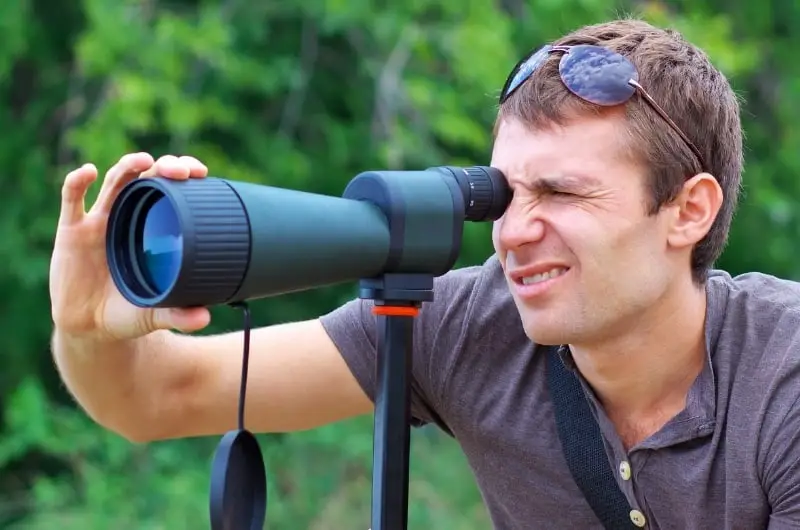
Some scopes come with the eyepiece permanently attached while others have interchangeable eyepieces. They are labeled with three numbers, for example, 20-60×80. As with binoculars, the first two numbers are magnification and the last number is the diameter of the objective lens.
To learn more about spotting scopes and how to choose one, read this great article from audubon.org.
Smartphone Apps

Most of us carry our smartphones everywhere we go and they can be a helpful tool when we are bird watching also. There are some great bird identification apps available for both iPhone and Android phones to help you identify the birds you see no matter where in the world you are.
My top recommendation for a bird ID app is Merlin Bird ID by The Cornell Lab Of Ornithology. With over 7500 species of birds from across the globe and the ability to identify them by photo or their calls, this app is hard to beat.

If you are in North America, the Audubon Bird Guide is a good app. It can help you identify over 800 birds by their size, color, type, activity, habitat, voice, wing shape, and tail shape. You can also record sightings of the birds you see and explore sightings other people record in real time.
I also recommend eBird by the Cornell Lab of Ornithology. This app is more for recording your sightings, so it’s like a life list right there in the palm of your hand. This app can be used both online and offline and records worldwide information on sightings which scientists can then use for bird study and conservation.
All of the above apps are free so download them and try them for yourself.
Bird Field Guides
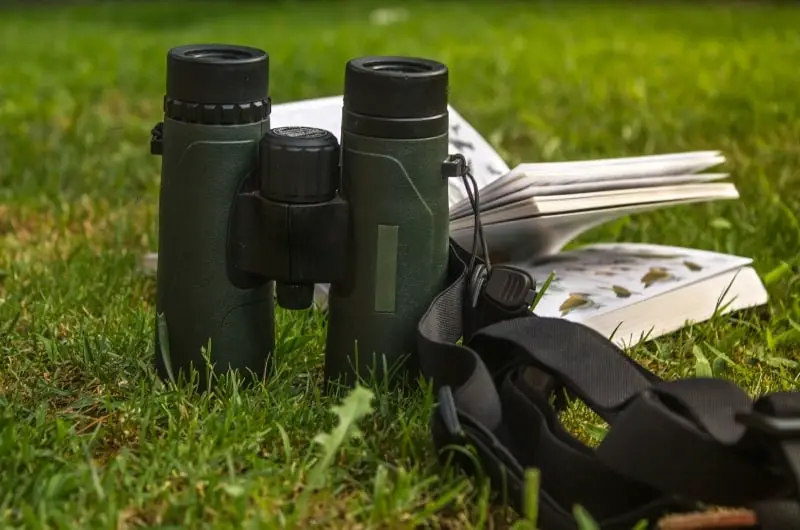
A bird field guide is a book that contains pictures and information about bird species from a particular country or area. You can carry a field guide with you just like the phone apps above and refer to it anytime you need to identify the birds you see.
I have listed various field guidebooks in my How To Bird Watch From Home article here on my blog. These guides cover bird species from Britain, North America, Australia, and India. No matter where you are in the world, you will likely find a bird field guide that will suit you.
A fantastic website for bird books of any kind is buteobooks.com. If you can’t find the field guide you require there, I don’t know where you will find it?! They also have international shipping.
A Camera And Zoom Lens
You may like to go one step further than just watching the birds and want to photograph them. For this, you are going to need a camera with a zoom lens.

A DSLR or mirrorless DSLR camera is perfect for this. You will also want a zoom lens with a minimum of 300mm in length. I go into more detail on cameras and lenses in my post Is 300mm Enough For Bird Photography? – A Pro’s opinion.
Even if you don’t photograph the birds, a camera and zoom lens can be a good substitute for binoculars or a scope. It might also be something you already have which can save you some money.
Further Reading
Try these other posts here on my site for more information about bird watching:

